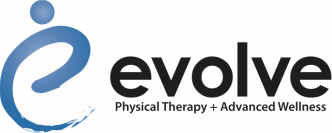|
Ingredients: 1. Preheat oven to 300°. 2. Heat a small Dutch oven over low heat. Add oil to pan; swirl to coat. Add garlic; cook 5 minutes or until garlic is fragrant, stirring occasionally. Remove garlic with a slotted spoon; set aside. Increase heat to medium-high. Add beef to pan; sprinkle with 1/2 teaspoon salt and 1/4 teaspoon pepper. Cook 5 minutes, browning on all sides. Remove beef from pan. Add wine to pan; bring to a boil, scraping pan to loosen browned bits. Add reserved garlic, beef, remaining 3/4 teaspoon salt, remaining 1/4 teaspoon pepper, carrot, and next 8 ingredients (through bay leaf), and bring to a boil. 3. Cover and bake at 300° for 2 1/2 hours or until beef is tender. Discard bay leaf. Serve over noodles. Note: To make in a slow cooker, prepare through Step 2. Place beef mixture in an electric slow cooker. Cover and cook on high for 5 hours or until beef is tender.
0 Comments
Physical Therapy Just as Effective as Surgery for
Degenerative Disc Disease Physical therapy and other non-operative treatments are just as effective at reducing pain and disability as surgical spinal fusion for patients suffering from degenerative disc disease (DDD), according to a recently published study conducted Thomas Jefferson University Hospital in Philadelphia. Results of the study, which were published ahead of print in World Neurosurgery, show that among 96 patients treated for DDD, there were no significant differences in outcomes between the 53 who were treated with lumbar fusion and the 43 who chose to pursue non-operative treatment. Measured outcomes included pain, health status, disability, and overall satisfaction. All patients were cared for by the same physiatrist. All of the subjects in the study received a diagnostic lumbar discography procedure between 2003 and 2009, and were offered fusion surgery based on the discogram and magnetic resonance imaging (MRI) results. Researchers found that while all patients reported significantly lower pain scores, data for the 2 groups "do not demonstrate a significant difference for standardized outcomes measures of pain, generalized health status, satisfaction, or disability." Results from an APTA survey found that 61% of Americans experience low back pain, but only 4 in 10 seek relief through movement. The APTA patient-focused Move Forward website offers a host of low back pain resources for physical therapists (PTs) and their patients, including audio presentations and an e-book on low back pain and how PTs can help. |
Quote of the Day"You are always only one choice away from changing your life." Archives
April 2023
|
San Diego, CA 92121 Fax: (858) 457-0976 M - F: 6:45 am - 7:00 pm
Email: [email protected]



 RSS Feed
RSS Feed